10g
Showing 2851–2900 of 4256 results
-
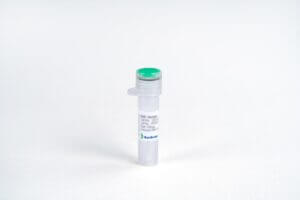
IL-15, Human
$90.56 Add to cart View Product DetailsInterleukin-15 (IL-15) is a cytokine with structural similarity to IL-2. Like IL-2, IL-15 binds to and signals through a complex composed of IL-2/IL-15 receptor beta chain (CD122) and the common gamma chain (gamma-C, CD132). IL-15 is secreted by mononuclear phagocytes (among other cells) following infection by virus. This cytokine induces cell proliferation of natural killer cells, which are cells of the innate immune system whose principal role is to kill virally infected cells. IL-15 can stimulate the proliferation of T-lymphocytes. Stimulation by IL-15 occurs following its interaction with IL-15Rα. This interaction may enhance IL-15’sinteraction with IL15Rβγc.
-

IL-16, Human
$155.25 Add to cart View Product DetailsIL-16 is a CD8+ T cell-derived cytokine that induces chemotaxis of CD4+ T cells and CD4+ monocytes and eosinophils. Analysis by gel filtration suggests that, under physiological conditions, human IL-16 exists predominantly as a noncovalently linked multimer, but that some IL-16 may exist as a monomer. However, only the multimeric form appears to possess chemotactic activity, suggesting that receptor cross-linking may be required for activity. IL-16 also induces expression of IL-2 receptor (IL-2R) and MHC class II molecules on CD4+ T cells. Human and murine IL-16 show significant cross-species reactivity.
-

IL-17A, His, Human
$68.14 Add to cart View Product DetailsInterleukin-17A (IL-17A),also known as CTLA-8 and IL-17, is a proinflammatory cytokine belonging to the IL-17 family. It is secreted by Th17 cells, gamma/delta T cells, NK cells and neutrophils. IL-17A signals through IL-17 receptor A in a complex with receptor C or D to regulate NF-kappaB and MAP kinase activities. IL-17A plays important roles in the anti-microbial response and chronic inflammation. It stimulates the production of IL-6, IL-8 and G-CSF in epithelial and endothelial cells, and induces the expression of ICAM-1 in fibroblasts. Clinically, IL-17A has been associated with inflammatory diseases, such as rheumatoid arthritis, psoriasis and multiple sclerosis.
-

IL-17A, Mouse
$68.14 Add to cart View Product DetailsInterleukin-17A, (also known as CTLA-8) is a T cell-expressed pleiotropic cytokine that exhibits a high degree of homology to a protein encoded by the ORF13 gene of herpesvirus Saimiri. cDNA clones encoding IL-17 have been isolated from activated rat, mouse and human T cells. IL-17 represents a family of structurally-related cytokines that share a highly conserved C-terminal region but differ from one another in their N-terminal regions and in their distinct biological roles. The six known members of this family, IL-17A through IL-17F, are secreted as homodimers.
-

IL-18 BP, Human
$43.13 Add to cart View Product DetailsInterleukin-18 binding protein, also known as IL-18BP and tadekinig-alfa, is a secreted glycoprotein that contains an Ig-like C2-type domain. It is expressed in heart, lung, placenta and spleen. IL-18BP functions as an inhibitor of the proinflammatory cytokine IL-18. It binds to IL-18, prevents the binding of IL-18 to its receptor, and thus blocks IL-18-induced IFN-gamma production. The complete Ig domain has been shown to mediate the binding and neutralizing properties. IFN-gamma is able to upregulate the expression of IL-18BP, indicating that IL-18 activity is regulated by a feedback mechanism through IL-18BP.
-

IL-18, Rat
$86.25 Add to cart View Product DetailsInterleukin-18 (IL18, also known as interferon-gamma inducing factor or IGIF) is a cytokine that belongs to the IL-1 superfamily and is produced by macrophages and other cells. Its biological activity is pleiotropic and it has been shown to induce interferon-gamma production in KG-1 cells. The combination of this cytokine and IL12 has been shown to inhibit IL4 dependent IgE and IgG1 production, and enhance IgG2a production in B cells.
-

IL-19, Human
$167.33 Add to cart View Product DetailsInterleukin-19 (IL-19) is a cytokine belonging to the interleukin family. Structurally, IL-19 is grouped into the IL-10 sub-family, which also includes IL-20, IL-22, IL-24, and IL-26. In contrast to IL-10, which exists as a homodimer, IL-19 is stable and active as a monomer in vivo. IL-19 functions through the receptor complex composed of IL-20 Receptor α and IL-20 Receptor β, which is also utilized by IL-20 and IL-24. IL-19 is produced by active monocytes and stimulated synergistically by IL-17 and IL-13. The functions of IL-19 are to promote the development and function of Th2 cells and to enhance the production of Th2 cytokines. IL-19 is implicated in aging, vascular disease, Type I diabetes, and rheumatoid arthritis.
-

IL-19, Mouse
$86.25 Add to cart View Product DetailsInterleukin-19 (IL-19) is a cytokine belonging to the interleukin family. Structurally, IL-19 is grouped into the IL-10 sub-family, which also includes IL-20, IL-22, IL-24, and IL-26. In contrast to IL-10, which exists as a homodimer, IL-19 is stable and active as a monomer in vivo. IL-19 functions through the receptor complex composed of IL-20 Receptor α and IL-20 Receptor β, which is also utilized by IL-20 and IL-24. IL-19 is produced by active monocytes and stimulated synergistically by IL-17 and IL-13. The functions of IL-19 are to promote the development and function of Th2 cells and to enhance the production of Th2 cytokines. IL-19 is implicated in aging, vascular disease, Type I diabetes, and rheumatoid arthritis.
-
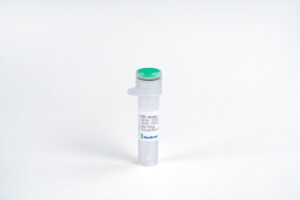
IL-1RA, Human
$81.94 Add to cart View Product DetailsInterleukin-1 receptor antagonist (IL-1ra) is a member of the IL-1 family. Endogenous IL-1ra is produced in numerous animal disease models as well as in human autoimmune and chronic inflammatory diseases. It binds to IL-1 receptors in competition with IL-1, but does not elicit intracellular response from this binding. Its role in counteracting the proinflammatory effects of IL-1 is being studied by numerous research groups. IL-4 and IL-13 have been shown to amplify the stimulatory effect of IL1-beta on the production of soluble and intracellular forms of IL1-ra. The regulated expression of IL1ra in various cell types has been shown to be influenced by cytokines. In synovial fibroblasts the synthesis of IL-1ra is markedly enhanced by IL-1, TNF-alpha, or PDGF.
-

IL-1α, Human
$155.25 Add to cart View Product DetailsIL-1 alpha is a non-secreted proinflammatory cytokine produced in a variety of cells including monocytes, tissue macrophages, keratinocytes and other epithelial cells. Both IL-1alpha and IL-1beta binds to the same receptor and has similar if not identical biological properties. These cytokines have a broad range of activities including, stimulation of thymocyte proliferation, by inducing IL-2 release, B-cell maturation and proliferation, mitogenic FGF-like activity and the ability to stimulate the release of prostaglandin and collagenase from synovial cells. However, whereas IL-1 beta is a secreted cytokine, IL-1 alpha is predominantly a cell-associated cytokine.
-

IL-1α, Mouse
$155.25 Add to cart View Product DetailsInterleukin-1 alpha (IL-1α) is a non-secreted proinflammatory cytokine produced in a variety of cells including monocytes, tissue macrophages, keratinocytes and other epithelial cells. Both IL-1αand IL-1β binds to the same receptor and has similar if not identical biological properties. These cytokines have a broad range of activities including, stimulation of thymocyte proliferation, by inducing IL-2 release, B-cell maturation and proliferation, mitogenic FGF-like activity and the ability to stimulate the release of prostaglandin and collagenase from synovial cells. However, whereas IL-1β is a secreted cytokine, IL-1α is predominantly a cell-associated cytokine.
-

IL-1α, Rat
$86.25 Add to cart View Product DetailsInterleukin-1 alpha (IL-1α), is produced in a variety of cells including monocytes, tissue macrophages, keratinocytes and other epithelial cells. Both IL-1 alpha and IL-1beta bind to the same receptor and have similar if not identical biological properties. These cytokines have a broad range of activities including stimulation of thymocyte proliferation via IL-2 release, B-cell maturation and proliferation, mitogenic FGF-like activity, and the ability to stimulate the release of prostaglandin and collagenase from synovial cells. However, whereas IL-1beta is a secreted cytokine, IL-1 alpha is predominantly a cell-associated cytokine.
-
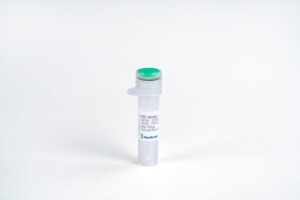
IL-1β, Human
$94.88 Add to cart View Product DetailsInterleukin-1 beta (rhIL-1β) is a proinflammatory cytokine produced in a variety of cells including monocytes, tissue macrophages, keratinocytes and other epithelial cells. Both IL-1 alpha and IL-1 beta binds to the same receptor and has similar if not identical biological properties. These cytokines have a broad range of activities including, stimulation of thymocyte proliferation, by inducing IL-2 release, B-cell maturation and proliferation, mitogenic FGF-like activity and the ability to stimulate the release of prostaglandin and collagenase from synovial cells. However, whereas IL-1 beta is a secreted cytokine, IL-1 alpha is predominantly a cell-associated cytokine.
-

IL-1β, Human(CHO-expressed)
$94.88 Add to cart View Product DetailsInterleukin 1 beta is a proinflammatory cytokine produced in a variety of cells including monocytes, tissue macrophages, keratinocytes and other epithelial cells. Both IL-1 alpha and IL-1 beta binds to the same receptor and has similar if not identical biological properties. These cytokines have a broad range of activities including, stimulation of thymocyte proliferation, by inducing IL-2 release, B-cell maturation and proliferation, mitogenic FGF-like activity and the ability to stimulate the release of prostaglandin and collagenase from synovial cells. However, whereas IL-1 beta is a secreted cytokine, IL-1 alpha is predominantly a cell-associated cytokine.
-

IL-1β, Mouse
$94.88 Add to cart View Product DetailsInterleukin-1 Beta (IL-1β) is a proinflammatory cytokine produced in a variety of cells including monocytes, tissue macrophages, keratinocytes and other epithelial cells. Both IL-1 alpha and IL-1 beta binds to the same receptor and has similar if not identical biological properties. These cytokines have a broad range of activities including, stimulation of thymocyte proliferation, by inducing IL-2 release, B-cell maturation and proliferation, mitogenic FGF-like activity and the ability to stimulate the release of prostaglandin and collagenase from synovial cells. However, whereas IL-1 beta is a secreted cytokine, IL-1 alpha is predominantly a cell-associated cytokine.
-

IL-1β, Mouse(CHO-expressed)
$76.76 Add to cart View Product DetailsInterleukin-1 (IL-1) is a family of cytokines that play a central role in the regulation of immune and inflammatory responses to infections or sterile insults. IL-1α and IL-1β are the first two members discovered in this family, which are the products of distinct genes recognizing the same cell surface receptors. IL-1α and IL-1β are structurally related polypeptides that show approximately 25% homology at the amino acid level. Both proteins are produced by a wide variety of cells in response to stimuli such as those produced by inflammatory agents, infections, or microbial endotoxins. The proteins are synthesized as 31 kDa precursors that are subsequently cleaved into proteins with molecular weights of approximately 17.5 kDa. The specific protease responsible for the processing of IL-1β is interleukin 1β-converting enzyme (ICE)/caspase-1. Mature human and mouse IL-1β share approximately 75% amino acid sequence identity where human IL-1β has been found to be active on murine cell lines.
-
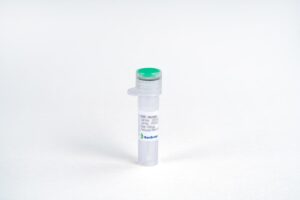
IL-1β, Rat
$86.25 Add to cart View Product DetailsInterleukin-1 Beta (IL-1 Beta) is a proinflammatory cytokine produced in a variety of cells including monocytes, tissue macrophages, keratinocytes and other epithelial cells. Both IL-1 alpha and IL-1 beta bind to the same receptor and have similar if not identical biological properties. These cytokines have a broad range of activities including, stimulation of thymocyte proliferation, by inducing IL-2 release, B-cell maturation and proliferation, mitogenic FGF-like activity and the ability to stimulate the release of prostaglandin and collagenase from synovial cells. However, whereas IL-1 beta is a secreted cytokine, IL-1 alpha is predominantly a cell-associated cytokine.
-

IL-1β, Rat
$159.56 Add to cart View Product DetailsInterleukin-1beta (IL-1β) is a non-secreted proinflammatory cytokine produced mainly by activated macrophages, as well as neutrophils, epithelial cells, and endothelial cells. It possesses metabolic, physiological, haematopoietic activities, and plays one of the central roles in the regulation of the immune responses. Both IL-1αand IL-1β binds to the same receptor and have similar but not identical biological properties. The mature rat IL1β shares 90 % a.a. sequence identity with cotton rat and mouse and 65 % to 77 % with canine, human,and rhesus IL1β.
-

IL-2 R α, His, Human
$63.83 Add to cart View Product DetailsInterleukin-2 receptor (IL-2R) is a heterotrimeric protein expressed on the surface of certain immune cells, such as lymphocytes, that binds and responds to the cytokine IL-2. The IL-2R is made up of 3 subunits – alpha (α), beta (β) and gamma (γ). The α and β chains are involved in binding IL-2, while signal transduction following cytokine interaction is carried out by the γ-chain, along with the β subunit. The β and γ chains of the IL-2R are members of the type I cytokine receptor family. IL-2R has a high binding affinity to IL-2 and is expressed by antigen-activated T lymphocytes (T cells). IL-2 Rα is also known as CD25, p55, and Tac (activated T cell) antigen.
-
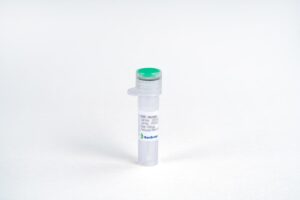
IL-2, Human
$68.14 Add to cart View Product DetailsInterleukin-2 (IL-2) is a Oglycosylated, four α-helix bundle cytokine that has potent stimulatory activity for antigen-activated T cells. It is expressed by CD4+ and CD8+ T cells, γδ T cells, B cells, dendritic cells, and eosinophils. IL-2/IL-2R signaling is required for T-cell proliferation and other fundamental functions which are essential for the immune response. IL-2 stimulates growth and differentiation of B-cells, NK cells, lymphokine activated killer cells, monocytes, macrophages and oligodendrocytes.
-
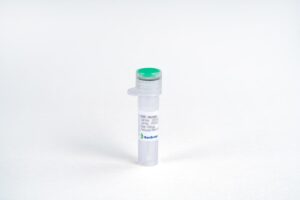
IL-2, Human
$64.69 Add to cart View Product DetailsInterleukin-2 (IL-2) is a Oglycosylated, four α-helix bundle cytokine that has potent stimulatory activity for antigen-activated T cells. It is expressed by CD4+ and CD8+ T cells, γδ T cells, B cells, dendritic cells, and eosinophils. IL-2/IL-2R signaling is required for T-cell proliferation and other fundamental functions which are essential for the immune response. IL-2 stimulates growth and differentiation of B-cells, NK cells, lymphokine activated killer cells, monocytes, macrophages and oligodendrocytes.
-

IL-20, Human
$155.25 Add to cart View Product DetailsIL-20 is a member of the IL-10 family of regulatory cytokines which includes IL-10, IL-19, IL-20, IL-22, IL-24 and IL-26. Members of this family share partial homology in their amino acid sequences but they are dissimilar in their biological functions. IL-20 is a hematopoietic growth factor capable of stimulating colony formation by CD34+ multipotential progenitors, but not by other progenitor cells. IL-20 signals through a receptor system composed of type I IL-20R-α and type II IL-20R-β. Over-expression of IL-20 in keratinocytes expressing both receptor subunits has been implicated in the induction of inflammatory skin disease.
-

IL-21, Human
$146.63 Add to cart View Product DetailsIL-21 is a pleiotropic cytokine produced by CD4+ T cells in response to antigenic stimulation. Its action generally enhances antigen-specific responses of immune cells. The biological effects of IL-21 include induction of differentiation of T-cells-stimulated B-cells into plasma cells and memory B-cells, stimulation (in conjuction) with IL-4 of IgG production, and induction of apoptotic effects in naïve B-cells and stimulated B-cells in the absence of T-cell signaling. Additionally, IL-21 promotes the anti-tumor activity of CD8+ T-cells and NK cells. IL-21 exerts its effect through binding to a specific type I cytokine receptor, IL-21R, which also contains the gamma chain (γc) found in other cytokine receptors including IL-2, IL-4, IL-7, IL-9 and IL-15. The IL-21/IL-21R interaction triggers a cascade of events which includes activation of the tyrosine kinases JAK1 and JAK3, followed by activation of the transcription factors STAT1 and STAT3.
-

IL-21, Human
$86.25 Add to cart View Product DetailsInterleukin-21 (IL-21) belongs to the Type I four helix bundle cytokines, and shares the common cytokine receptor γ chain with IL-2, IL-4, IL-7, IL-9, and IL-15. IL-21 is expressed by CD4+ T cells, natural killer (NK) T cells, and Th17 cells, and the IL-21 receptor is highly expressed on CD4+ and CD8+ B cells; indeed, IL-21 plays a pivotal role in the survival and proliferation of B cells, and their differentiation to immunoglobulin (Ig) producing cells. IL-21 up-regulates and down-regulates the production of IgG1 and IgE by B cells, respectively, and diminishes the severity of allergy and asthma. In some case, IL-21 also induces the apoptosis of B cells. The other roles of IL-21 include regulation of innate immune systems, implication on autoimmunity, and antitumor actions.
-

IL-21, Mouse
$90.56 Add to cart View Product DetailsInterleukin-21 (IL-21) belongs to the Type I four helix bundle cytokines, and shares the common cytokine receptor γ chain with IL-2, IL-4, IL-7, IL-9, and IL-15. IL-21 is expressed by CD4+ T cells, natural killer (NK) T cells, and Th17 cells. The IL-21 receptor is highly expressed on CD4+ and CD8+ B cells. IL-21 plays a pivotal role in the survival and proliferation of B cells, and their differentiation to immunoglobulin (Ig) producing cells. IL-21regulates the production of IgG1 and IgE by B cells, and diminishes the severity of allergy and asthma. In some cases, IL-21 induces B cell apoptosis. Other roles of IL-21 include regulation of the innate immune system, implication in autoimmunity, and antitumor activity.
-

IL-22, Human
$90.56 Add to cart View Product DetailsInterleukin-22(IL-22) belongs to a group of cytokines called the IL-10 family or IL-10 superfamily (including IL-19, IL-20, IL-24, and IL-26) which are a class of potent mediators of cellular inflammatory responses. It shares use of IL-10R2 in cell signaling with other members of this family, such as IL-10, IL-26, IL-28A/B and IL-29. IL-22 is produced by activated DC and T cells and initiates innate immune responses against bacterial pathogens in epithelial cells such as those in the lung and gut. IL-22 along with IL-17 is produced by splenic LTi-like cells and Th17 cells and likely plays a role in the coordinated response of both adaptive and innate immune systems.IL-22 signals through a receptor system consisting of IL-10R-β/CRF2-4 and IL-22R, both of which are members of the class II cytokine-receptor family.
-

IL-22, Human(HEK 293-expressed)
$86.25 Add to cart View Product DetailsInterleukin-22(IL-22) belongs to a group of cytokines called the IL-10 family or IL-10 superfamily (including IL-19, IL-20, IL-24, and IL-26) which are a class of potent mediators of cellular inflammatory responses. It shares use of IL-10R2 in cell signaling with other members of this family, such as IL-10, IL-26, IL-28A/B and IL-29. IL-22 is produced by activated DC and T cells and initiates innate immune responses against bacterial pathogens in epithelial cells such as those in the lung and gut. IL-22 along with IL-17 is produced by splenic LTi-like cells and Th17 cells and likely plays a role in the coordinated response of both adaptive and innate immune systems.IL-22 signals through a receptor system consisting of IL-10R-β/CRF2-4 and IL-22R, both of which are members of the class II cytokine-receptor family.
-

IL-22, Mouse
$90.56 Add to cart View Product DetailsInterleukin-22 (IL-22) is a member of a group of cytokines called the IL-10 family which include IL-10,IL-19, IL-20, IL-24, and IL-26. IL-22 shares use of the IL-10R2 in cell signaling with other members of this family IL-22 signals through a receptor system consisting of IL-10R-β/CRF2-4 and IL-22R, both of which are members of the class II cytokine-receptor family. IL-22 is produced by activated DCs and T cells and initiates an innate immune response against bacterial pathogens especially in epithelial cells such as those in the respiratory tract and gut. IL-22 along with IL-17 is rapidly produced by splenic LTi-like cells and can also be produced by Th17 cells, which plays a likely role in the coordinated response of both adaptive and innate immune systems.
-

IL-22, Mouse
$107.81 Add to cart View Product DetailsInterleukin-22 (IL-22) is a member of a group of cytokines called the IL-10 family which include IL-10,IL-19, IL-20, IL-24, and IL-26. IL-22 shares use of the IL-10R2 in cell signaling with other members of this family IL-22 signals through a receptor system consisting of IL-10R-β/CRF2-4 and IL-22R, both of which are members of the class II cytokine-receptor family. IL-22 is produced by activated DCs and T cells and initiates an innate immune response against bacterial pathogens especially in epithelial cells such as those in the respiratory tract and gut. IL-22 along with IL-17 is rapidly produced by splenic LTi-like cells and can also be produced by Th17 cells, which plays a likely role in the coordinated response of both adaptive and innate immune systems.
-

IL-3, Human
$86.25 Add to cart View Product DetailsInterleukin-3 (IL-3) is a pleiotropic cytokine belonging to the interleukin family. IL-3 shares similarities with Granulocyte-Macrophage Colony-Stimulating Factor (GM-CSF) and IL-5: they all have a four-helix bundle structure, are located on the same chromosomes in both human and mouse, are produced by activated T cells, and share receptors. The IL-3/IL-5/GM-CSF receptor family members are all heterodimeric, composed of a receptor-specific α chain and a common β chain. IL-3 is also called multi-colony stimulating factor since it stimulates the development and colony formation of multiple lineages of hematopoietic cells by activating intracellular pathways such as Ras-Raf-ERK and JAK/STAT. IL-3 inhibits apoptosis and promotes cell survival by targeting the anti-apoptotic bcl-2 gene family.
-

IL-3, Human(CHO-expressed)
$76.76 Add to cart View Product DetailsInterleukin-3 (IL-3) is a pleiotropic cytokine belonging to the interleukin family. IL-3 shares similarities with Granulocyte-Macrophage Colony-Stimulating Factor (GM-CSF) and IL-5: they all have a four-helix bundle structure, are located on the same chromosomes in both human and mouse, are produced by activated T cells, and share receptors. The IL-3/IL-5/GM-CSF receptor family members are all heterodimeric, composed of a receptor-specific α chain and a common β chain. IL-3 is also called multi-colony stimulating factor since it stimulates the development and colony formation of multiple lineages of hematopoietic cells by activating intracellular pathways such as Ras-Raf-ERK and JAK/STAT. IL-3 inhibits apoptosis and promotes cell survival by targeting the anti-apoptotic bcl-2 gene family.
-

IL-3, Mouse
$86.25 Add to cart View Product DetailsInterleukin-3 (IL-3) is a pleiotropic cytokine belonging to the interleukin family. IL-3 shares similarities with Granulocyte-Macrophage Colony-Stimulating Factor (GM-CSF) and IL-5: they all have a four-helix bundle structure, are located on the same chromosomes in both human and mouse, are produced by activated T cells, and share receptors. The IL-3/IL-5/GM-CSF receptor family members are all heterodimeric, composed of a receptor-specific α chain and a common β chain. IL-3 is also called multi-colony stimulating factor since it stimulates the development and colony formation of multiple lineages of hematopoietic cells by activating intracellular pathways such as Ras-Raf-ERK and JAK/STAT. IL-3 inhibits apoptosis and promotes cell survival by targeting the anti-apoptotic bcl-2 gene family.
-

IL-31, Human
$155.25 Add to cart View Product DetailsHuman IL-31 is a T-cell derived cytokine that shares several structural and functional characteristics with IL-6, Oncostatin M, LIF, and Cardiotrophin-1. It signals through a receptor complex comprised of GPL (GP130-like, IL-31RA) and OSMR (Oncostatin M receptor). GPL/OSMR signaling is a strong activator of STAT3 and STAT5, and can also activate STAT1, Jak1, and Jak2 signaling pathways. IL-31 regulated immune responses have been implicated in skin physiology and inflammatory skin diseases.
-

IL-33, Human
$86.25 Add to cart View Product DetailsInterleukin-33 (IL-33) is a proinflammatory cytokine that belongs to the IL-1 family. IL-33 is expressed in a variety of cells, including epithelial and endothelial cells, smooth muscle cells, macrophages and fibroblasts. The primary receptors for IL-33 are ST2 and IL-1 receptor accessory protein (IL-1RAcP), both of which belong to the IL-1 receptor family. IL-33 is localized to the nucleus of resting cells where it binds to chromatin in the H2A-H2B histone complex as a transcriptional suppressor. IL-33 is secreted by cells during injury which induces a T-helper 2 type inflammatory response. Evidence suggests IL-33 plays a role in autoimmune disease. IL-33’s interaction with ST2 can drive allergic pathology and IL-33 has been reported to play a role in the development of rheumatoid arthritis and systemic lupus erythematosus.
-

IL-33, Mouse
$155.25 Add to cart View Product DetailsInterleukin-33 (IL-33) is a proinflammatory cytokine that belongs to the IL-1 family. IL-33 is expressed in a variety of cells, including epithelial and endothelial cells, smooth muscle cells, macrophages and fibroblasts. The primary receptors for IL-33 are ST2 and IL-1 receptor accessory protein (IL-1RAcP), both of which belong to the IL-1 receptor family. IL-33 is localized to the nucleus of resting cells where it binds to chromatin in the H2A-H2B histone complex as a transcriptional suppressor. IL-33 is secreted by cells during injury which induces a T-helper 2 type inflammatory response. Evidence suggests IL-33 plays a role in autoimmune disease. IL-33’s interaction with ST2 can drive allergic pathology and IL-33 has been reported to play a role in the development of rheumatoid arthritis and systemic lupus erythematosus.
-

IL-4 R, Human
$94.88 Add to cart View Product DetailsInterleukin-4 Receptor, also known as IL-4RA and CD124, is a transmembrane glycoprotein belonging to the class I receptor family. It is highly expressed by activated T-cells. IL-4RA couples with γ chain to form the type I receptor for IL-4. The extracellular domain of IL-4RA binds to IL-4 and antagonizes its activity. IL-4RA plays an important role in Th2 cell differentiation, Ig class switching and alternative macrophage activation. It has also been implicated in allergic inflammation, tumor progression and atherogenesis.
-

IL-4, Human
$68.14 Add to cart View Product DetailsInterleukin-4 (IL-4) is a pleiotropic cytokine regulates diverse T and B cell responses including cell proliferation, survival, and gene expression. It has important effects on the growth and differentiation of different immunologically competent cells. Interleukin-4 is produced by mast cells, T cells, and bone marrow stromal cells. IL-4 regulates the differentiation of native CD4+ T cells (Th0 cells) into helper Th2 cells, and regulates the immunoglobulin class switching to the IgG1 and IgE isotypes. IL-4 has numerous important biological functions including stimulating B-cells activation, T-cell proliferation and CD4+ T-cells differentiation to Th2 cells. It is a key regulator in hormone control and adaptive immunity. IL-4 also plays a major role in inflammation response and wound repair via activation of macrophage into M2 cells. IL-4 is stabilized by three disulphide bonds forming a compact globular protein structure. Four alpha-helix bundle with left-handed twist is dominated half of the protein structure with 2 overhand connections and fall into a 2-stranded anti-parallel beta sheet.
-

IL-4, Mouse
$76.76 Add to cart View Product DetailsInterleukin-4 (IL-4) is a pleiotropic cytokine regulates diverse T and B cell responses including cell proliferation, survival, and gene expression. It has important effects on the growth and differentiation of different immunologically competent cells. Interleukin-4 is produced by mast cells, T cells, and bone marrow stromal cells. IL-4 regulates the differentiation of native CD4+ T cells (Th0 cells) into helper Th2 cells, and regulates the immunoglobulin class switching to the IgG1 and IgE isotypes. IL-4 has numerous important biological functions including stimulating B-cells activation, T-cell proliferation and CD4+ T-cells differentiation to Th2 cells. It is a key regulator in hormone control and adaptive immunity. IL-4 also plays a major role in inflammation response and wound repair via activation of macrophage into M2 cells. IL-4 is stabilized by three disulphide bonds forming a compact globular protein structure. Four alpha-helix bundle with left-handed twist is dominated half of the protein structure with 2 overhand connections and fall into a 2-stranded anti-parallel beta sheet.
-
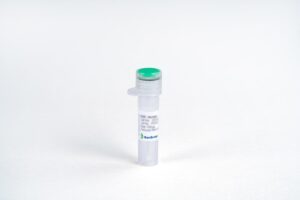
IL-4, Porcine
$94.88 Add to cart View Product DetailsInterleukin-4 (IL-4) is a pleiotropic cytokine regulates diverse T and B cell responses including cell proliferation, survival, and gene expression. It has important effects on the growth and differentiation of different immunologically competent cells. Interleukin-4 is produced by mast cells, T cells, and bone marrow stromal cells. IL-4 regulates the differentiation of native CD4+ T cells (Th0 cells) into helper Th2 cells, and regulates the immunoglobulin class switching to the IgG1 and IgE isotypes. IL-4 has numerous important biological functions including stimulating B-cells activation, T-cell proliferation and CD4+ T-cells differentiation to Th2 cells. It is a key regulator in hormone control and adaptive immunity. IL-4 also plays a major role in inflammation response and wound repair via activation of macrophage into M2 cells. IL-4 is stabilized by three disulphide bonds forming a compact globular protein structure. Four alpha-helix bundle with left-handed twist is dominated half of the protein structure with 2 overhand connections and fall into a 2-stranded anti-parallel beta sheet.
-

IL-5, Human
$86.25 Add to cart View Product DetailsInterleukin-5 (IL-5), produced by mast cells, T cells and eosinophils, is responsible for the activities attributed to eosinophil differentiating factor, B cell growth factor II and T cell-replacing factor (TRF). It can increase production and mobilization of eosinophils and CD34+ progenitors from the bone marrow. IL-5 plays an important role in inducing cell-mediated immunity against parasitic infections and certain tumors. IL-5 also promotes differentiation of basophils and primes them for histamine and leukotriene release.
-

IL-5, Human(CHO-expressed)
$86.25 Add to cart View Product DetailsInterleukin-5 (IL-5), produced by mast cells, T cells and eosinophils, is responsible for the activities attributed to eosinophil differentiating factor, B cell growth factor II and T cell-replacing factor (TRF). It can increase production and mobilization of eosinophils and CD34+ progenitors from the bone marrow. IL-5 plays an important role in inducing cell-mediated immunity against parasitic infections and certain tumors. IL-5 also promotes differentiation of basophils and primes them for histamine and leukotriene release.
-

IL-5, Mouse
$86.25 Add to cart View Product DetailsInterleukin-5 (IL-5), produced by mast cells, T cells and eosinophils, is responsible for the activities attributed to eosinophil differentiating factor, B cell growth factor II and T cell-replacing factor (TRF). It can increase production and mobilization of eosinophils and CD34+ progenitors from the bone marrow. IL-5 plays an important role in inducing cell-mediated immunity against parasitic infections and certain tumors. IL-5 also promotes differentiation of basophils and primes them for histamine and leukotriene release.
-

IL-5, Mouse(CHO-expressed)
$86.25 Add to cart View Product DetailsInterleukin-5 (IL-5), produced by mast cells, T cells and eosinophils, is responsible for the activities attributed to eosinophil differentiating factor, B cell growth factor II and T cell-replacing factor (TRF). It can increase production and mobilization of eosinophils and CD34+ progenitors from the bone marrow. IL-5 plays an important role in inducing cell-mediated immunity against parasitic infections and certain tumors. IL-5 also promotes differentiation of basophils and primes them for histamine and leukotriene release.
-

IL-5, Rat
$86.25 Add to cart View Product DetailsInterleukin-5 (IL-5), produced by mast cells, T cells and eosinophils, is responsible for the activities attributed to eosinophil differentiating factor, B cell growth factor II and T cell-replacing factor (TRF). It can increase production and mobilization of eosinophils and CD34+ progenitors from the bone marrow. IL-5 plays an important role in inducing cell-mediated immunity against parasitic infections and certain tumors. IL-5 also promotes differentiation of basophils and primes them for histamine and leukotriene release.
-

IL-5, Rat
$86.25 Add to cart View Product DetailsInterleukin-5 (IL-5), produced by mast cells, T cells and eosinophils, mediates the activities of eosinophil differentiating factor, B cell growth factor II and T cell-replacing factor (TRF). It can increase production and mobilization of eosinophils and CD34+ progenitors from the bone marrow. IL-5 plays an important role in inducing cell-mediated immunity against parasitic infections and certain tumors. IL-5 also promotes differentiation of basophils and primes them for histamine and leukotriene release.
-

IL-5RA, His, Human
$90.56 Add to cart View Product DetailsInterleukin-5 Receptor alpha (IL-5Rα, CD125) is a 60 kDa hematopoietin receptor that plays a dominant role in eosinophil biology. Mature human IL-5 Rα consists of a 322 aa extracellular domain (ECD) with a WSxWS motif and a four cysteine motif, a 20 aa transmembrane segment, and a 58 aa cytoplasmic domain. Within the ECD, human IL-5Rα shares 71% aa sequence identity with mouse and rat IL-5 Rα. Alternate splicing of human IL-5 Rα generates soluble secreted forms which function as IL-5 antagonists. The high affinity receptor for IL-5 is a complex that consists of the ligand binding IL-5 Rα and the transmembrane common β chain (βc/CD131) which is shared with the receptor complexes for IL-3 and GMCSF. IL-5 Rα binds IL-5 at low affinity and then associates with preformed βc oligomers to form the signaling competent receptor complex. IL-5 stimulation of CD34+ hematopoietic progenitor cells induces the up-regulation of transmembrane IL-5Rα followed by eosinophilic differentiation and activation.
-
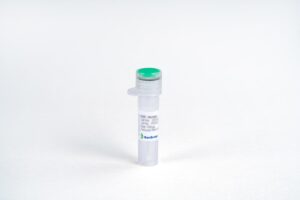
IL-6, Human
$68.14 Add to cart View Product DetailsInterleukin-6 (IL-6), also known as BSF-2, CDF and IFNB2, is a pleiotropic cytokine that participates in both pro-inflammatory and anti-inflammatory responses. It is produced mainly by T cells, macrophages, monocytes, endothelial cells and muscle cells. IL-6 binds to IL-6 receptor (IL-6R) to trigger the association of IL-6R with gp130, inducing signal transduction through JAKs and STATs. The biological functions of IL-6 are diverse. It stimulates B cell differentiation and antibody production, myeloma and plasmacytoma growth, and nerve cell differentiation. It also acts as a myokine, produced by muscle cells in response to muscle contraction and released into the blood stream to help break down fats and improve insulin resistance.
-

IL-6, Human(CHO-expressed)
$63.83 Add to cart View Product DetailsInterleukin-6 (IL-6), also known as BSF-2, CDF and IFNB2, is a pleiotropic cytokine that acts in both pro-inflammatory and anti-inflammatory responses. It is produced mainly by T cells, macrophages, monocytes, endothelial cells and muscle cells. IL-6 binds to IL-6 receptor (IL-6R) to trigger the association of IL-6R with gp130, inducing signal transduction through JAKs and STATs. The biological functions of IL-6 are diverse. It stimulates B cell differentiation and antibody production, myeloma and plasmacytoma growth, as well as nerve cell differentiation. It also acts as a myokine, produced by muscle cells in response to muscle contraction, to be released to the blood stream to help break down fats and improve insulin resistance.
-

IL-6, Mouse
$155.25 Add to cart View Product DetailsInterleukin-6 (IL-6), also known as BSF-2, CDF and IFNB2, is a pleiotropic cytokine that participates in both pro-inflammatory and anti-inflammatory responses. It is produced mainly by T cells, macrophages, monocytes, endothelial cells and muscle cells. IL-6 binds to IL-6 receptor (IL-6R) to trigger the association of IL-6R with gp130, inducing signal transduction through JAKs and STATs. The biological functions of IL-6 are diverse. It stimulates B cell differentiation and antibody production, myeloma and plasmacytoma growth, and nerve cell differentiation. It also acts as a myokine, produced by muscle cells in response to muscle contraction and released into the blood stream to help break down fats and improve insulin resistance.
-

IL-6R, Human
$94.88 Add to cart View Product DetailsInterleukin-6 Receptor Alpha, also known as IL-6RA, IL-6R1 and CD126, belongs to the type I cytokine receptor family. It is mainly expressed on T cells, fibroblasts and macrophages. IL-6RA couples with gp130 to form the IL-6 receptor; IL-6RA binds specifically to IL-6 and depends on gp130 to transmit signals. IL-6RA dysfunction has been correlated with the pathogenesis of many diseases, such as multiple myeloma, autoimmune diseases and prostate cancer. Soluble IL-6RA, which consists of only the extracellular domain of IL-6RA, acts as an agonist of IL-6 activity.






